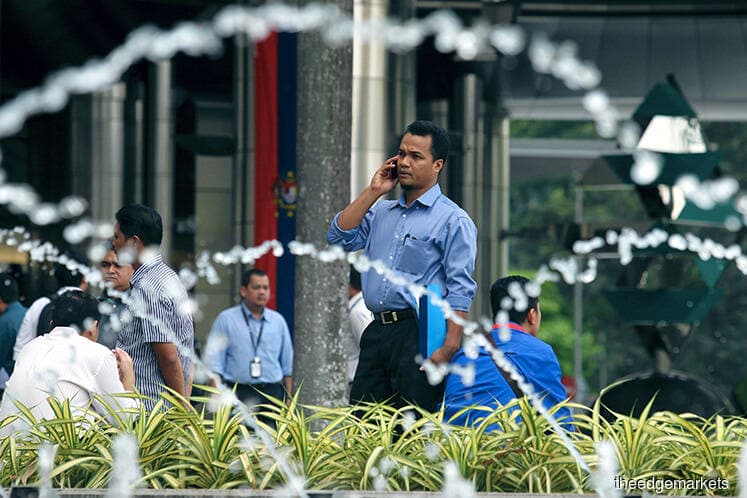
This article first appeared in The Edge Malaysia Weekly on April 27, 2020 - May 3, 2020
ON March 27, Prime Minister Tan Sri Muhyiddin Yassin announced the RM250 billion Prihatin, an economic stimulus package designed to curb the impact of the Covid-19 pandemic.
It offers two forms of financial aid to employers: the Employment Retention Programme (ERP); and the Wage Subsidy Programme (WSP).
Subsequently, on April 6, the prime minister announced that more subsidies would be provided to small and medium enterprises (SMEs) under the WSP, subject to certain terms and conditions.
What is available to employers under the ERP and WSP?
The ERP aims to retain employment by providing financial aid to employees who have agreed to be put on unpaid leave for at least 30 days since March. An eligible employee would receive RM600 a month for a maximum of six months. The WSP aims to provide financial assistance to employers for continuing to pay full salaries to employees during the business downturn. Depending on the number of employees, an eligible employer would receive RM600, RM800 or RM1,200 a month for each eligible employee for a maximum of three months (see table).
An employer may apply for the ERP and WSP concurrently, but an employee receiving the ERP is not eligible for the WSP and vice versa.
The notable differences between the two programmes are:
Obligation to pay salaries
Under the ERP, an employer who issues a notice of unpaid leave to an employee for at least 30 days (with the employee’s consent) is not obligated to pay their salary during the period of unpaid leave. The employer is only obligated to ensure the RM600 financial assistance under the ERP is credited to the employee’s bank account.
Under the WSP, an employer must pay the employee’s full salary. For example, if the full salary is RM2,000, the employer must pay RM2,000 to the employee while using the financial assistance the company receives under the WSP to reimburse/facilitate its cash flow. The employer must continue to pay full salaries to employees for three months after receiving the WSP.
Management of the workforce
The ERP would be relevant to employers such as service providers or retailers undergoing or anticipating a severe downturn in business and operations, causing them to put their employees on at least 30 days of unpaid leave.
The ERP would be less helpful to SMEs, which are already running on limited headcount, unless they intend to temporarily cease operations. Putting some employees on unpaid leave might impair the business operations of SMEs. The WSP seems to be more relevant for employers intending to maintain the size of their active workforce and seeking financial assistance to ease the company’s cash flow.
Effects on management of workforce on receipt of ERP and WSP
One of the differences between the ERP and WSP is the duration of the financial assistance. The ERP, as its name suggests, aims to retain employment. It provides a longer duration of financial assistance than the WSP.
The WSP, on the other hand, aims to provide temporary relief for employers for three months, on condition that the employer cannot terminate, issue a notice of unpaid leave or deduct employees’ salaries for at least six months (three months while on WSP and three months post-WSP).
Proof of business downturn
For medium and large enterprises (MLEs) with more than 75 employees, only those that have seen a reduction of at least 50% in earnings since January are eligible to apply for the WSP. They are required to provide a declaration by the employer or its authorised representative that, among others, states the above. The employer or its authorised representative are bound by this declaration — there are legal consequences to an untruthful declaration.
Method of payment
Under the ERP, an employer acts as an intermediary in applying for and giving financial assistance to employees. Employers are expected to comply with the requirement that they deposit the financial assistance into employees’ bank accounts within seven days of receiving it from the Social Security Organisation. Under the WSP, an employer continues to pay wages as usual and the financial assistance is given to and used by the employer.
Here are a few things for employers to consider in choosing the right programme for both employees and the company:
• Has the business been affected by the Covid-19 outbreak since January? If yes, to what extent?
• What is the minimum headcount required to keep the business up and running?
• What happens to operations if some employees are put on unpaid leave?
• What is the outlook for the business for next three months to six months?
• Depending on the projected outlook for the business for next three months to six months, what is the plan to manage the workforce during that period?
• Given that the MCO has been extended until May 12, hence putting more strain on the economy and businesses, would embarking on a more aggressive retrenchment exercise now make more sense than applying for ERP or WSP?
Employers ought to examine all the cards in their hands and use the correct resources during these trying times. Employers, ultimately, would still have to decide whether such packages will work for them or whether they should resort to “self-help” by implementing more aggressive cost-cutting measures to survive.
Leonard Yeoh is a partner and Eri Fu is a legal associate at legal firm Tay & Partners
Save by subscribing to us for your print and/or digital copy.
P/S: The Edge is also available on Apple's AppStore and Androids' Google Play.